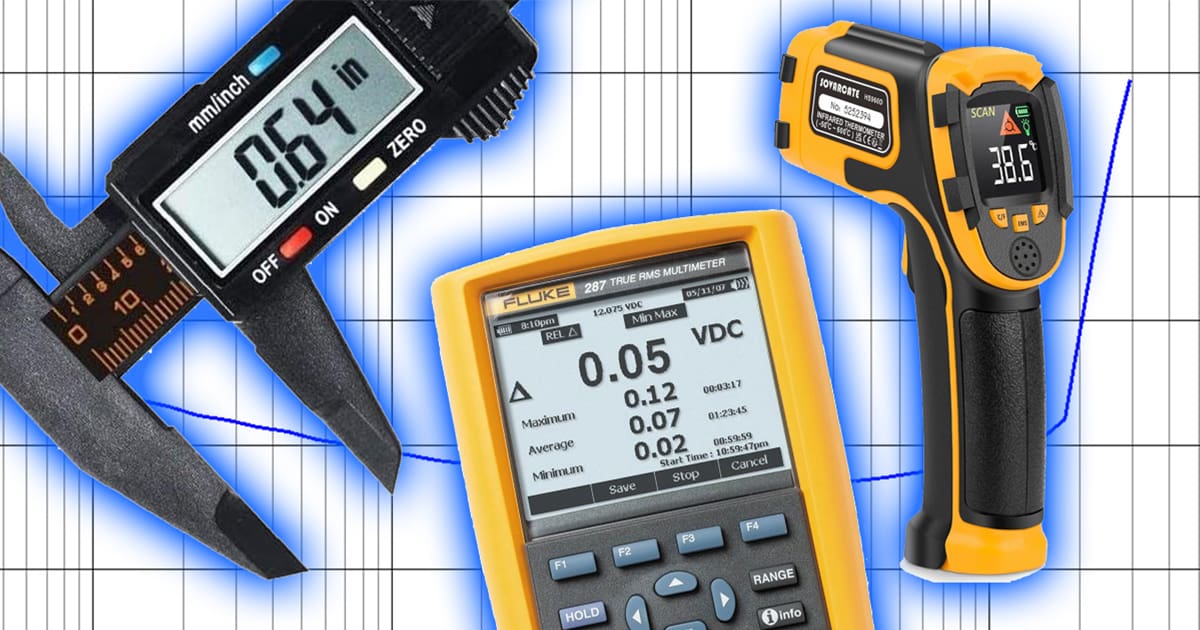Can you imagine if the inch or centimeter weren’t measurement standards? Nobody would be able to describe the size of anything. Standards are all around us. Distance, time and temperature descriptions are things we take for granted. Why, then, shouldn’t measurements of car audio components have measurement standards? Fortunately, they do, but you’ll still find many companies and amateur enthusiasts not using them. Let’s discuss standards and how we’ll change the measurements we include in our Test Drive Reviews.
Power Ratings without Qualification Mean Nothing
If I told you that an amplifier made 1,000 watts of power, you’d likely think it was pretty powerful. You’d be right. One thousand watts is a lot of power. However, what if I added that the amplifier needed to drive a 0.5-ohm load to make that power? If you know anything about electronics, you’d know that the chances of that amp being efficient are slim. It might produce a lot of power, but it will also waste a significant amount of energy as heat.
You’d also have to ponder how you’d get that 1,000 watts of power using a conventional subwoofer. Most dual voice coil subwoofers are available in dual 2- or dual 4-ohm configurations. If we want to use the amp to power a single sub, we would need a dual 1-ohm driver. Yes, they exist, but they are far from commonplace. Further, in almost every amplifier we’ve ever tested, driving lower impedances results in more distortion added to the output signal. So far, things aren’t looking as good for our amplifier.
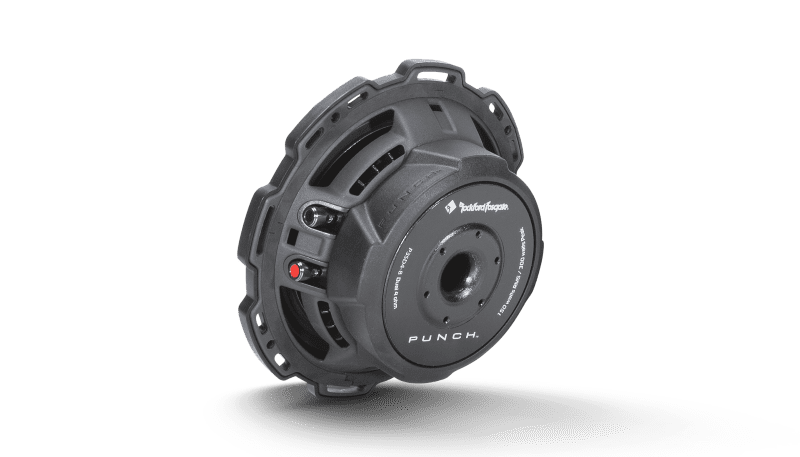
Let’s add that the amp needs 18 volts to produce 1,000 watts of power. Suddenly, the number is irrelevant, since there aren’t any daily-driver cars or trucks with electrical systems producing much more than 15 volts. Your installer might be able to upgrade your vehicle with a dedicated alternator and special batteries to supply 18 volts. But you aren’t going to walk into a local car dealership and buy a new car with an 18-volt electrical system.
As the famous TV huckster Ron Popeil used to say, “But wait, there’s more!” The last news is that our 1,000-watt amplifier adds 20% total harmonic distortion and noise (THD+N) at that power level. This level of distortion would be considered “hard clipping” to anyone looking at the output waveform on an oscilloscope. Chances are, this amp is, at best, a 500-watt-amp when measured using common standards. Not as exciting, is it? Imagine the chaos without good measurement standards!
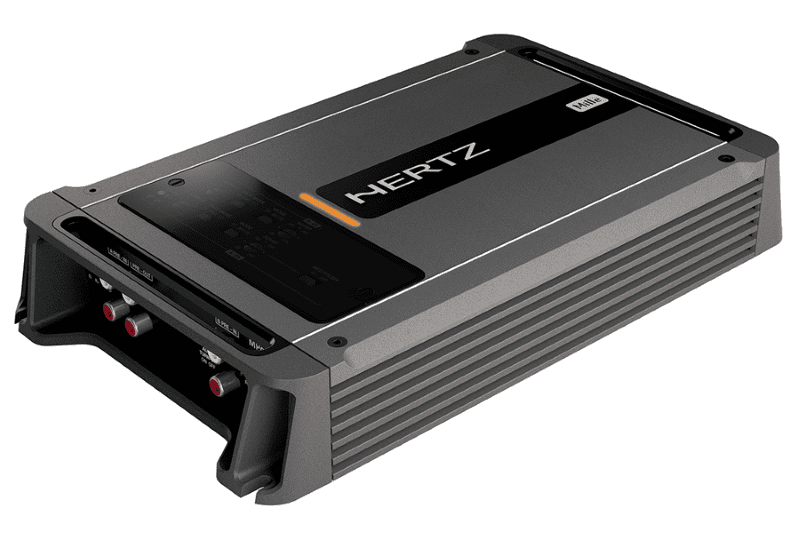
The Importance of ANSI/CTA Measurement Standards
The Consumer Technology Association is a standards organization dedicated to the consumer electronics industry. They have developed standards for everything from project, environmental and supply chain management to machine safety, electric vehicle safety specifications, and, of course, standards for measuring audio equipment.
Why did the car audio industry need measurement standards? Well, the example above is perfect. Manufacturers could lie about the power production capabilities of an amplifier by increasing the supply voltage or ignoring the level of distortion added to a signal. Manufacturers have brainwashed consumers into thinking that more power is better and a sign of quality. Both assumptions are incorrect. By setting a benchmark for measuring power (and other important specifications), it became easy for companies to publish comparable numbers. The result is that consumers avoid being lied to and better understand what they are purchasing.
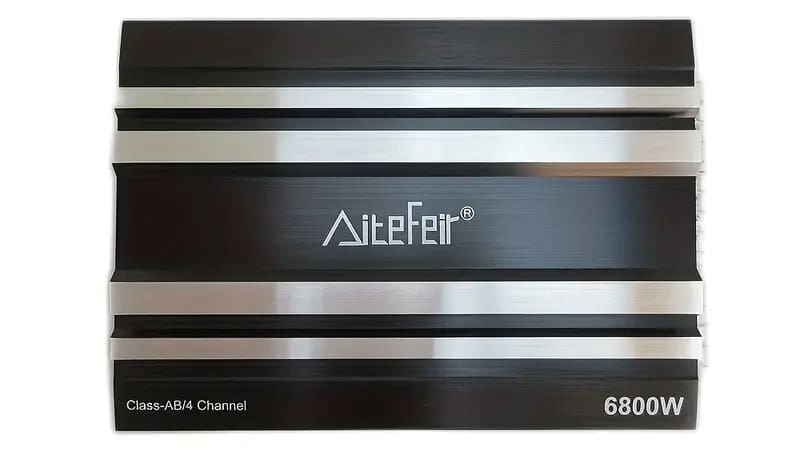
Measuring Car Audio Amplifier Power
The ANSI/CTA-2006-D Testing and Measurement Methods for In-Vehicle Audio Amplifiers document covers the measurement of car audio amplifiers. It specifies that the signal can contain no more than 1% THD+N for power production. The amplifier test should be done with a supply voltage of 14.4 volts (plus or minus 5%), and the load impedance should be clearly specified. The amplifier must produce this power for 15 seconds.
You’d be surprised how many amplifiers can’t produce their rated full power level for 15 seconds. Finally, the standard notes that the tester simultaneously drives all amplifier channels to their limits. The specifications found on some multichannel amplifiers will show exaggerated power rating numbers by stating values as measured in a “typical three-way” configuration or something similar. This sort of quantification implies that the power supply in the amplifier can’t provide adequate current to all channels simultaneously.
Distortion Measurement Standards
The CTA-2006-D standard also includes specifications for measuring an amplifier’s distortion characteristics. There are two options for stating distortion. One is to quantify total harmonic distortion and noise (THD+N) at a specific power level. The second is to state THD+N at an output level of 1 watt into a 4-ohm load. Many people don’t know that the specification should be the highest distortion level measured in one-third octave intervals from 20 Hz to 20 kHz.
Amateurs to the Rescue?
We’ve recently seen an infestation of amateurs who have invested in tools to measure amplifier performance. We love to see people curious about the quality of products, so this is excellent news. However, few, if any, of the charts and graphs produced by these DIY tests are compliant with any standards. Unfortunately, this makes the data useless when compared with anything other than data from the same test conditions. We’ve attempted to explain this but quickly gave in and bowed to their obvious Dunning-Kruger affliction.
In a moment, we’ll demonstrate why making distortion measurements at reference levels is crucial.
Changes to Testing Standards
Until now, all the Test Drive Reviews published here at BestCarAudio.com have used single frequencies for harmonic distortion and noise measurements. We use 1 kHz for full-range amplifiers and 50 hertz for bandwidth-limited subwoofer amplifiers. In compliance with the CTA-2006-D standard, we’ll provide a graph showing THD+N across the available audio spectrum going forward. We’ll also evolve the amplifier testing to include distortion versus output amplitude plots. These are crucial to getting a better understanding of the performance of an amplifier, and adding these measurement standards won’t add too much time to the testing process.
Distortion Versus Frequency Measurement
The image below shows the spectral analysis of a 1-kHz tone played at 2 volts (1 watt into a 4-ohm load) by a high-quality car audio amp.
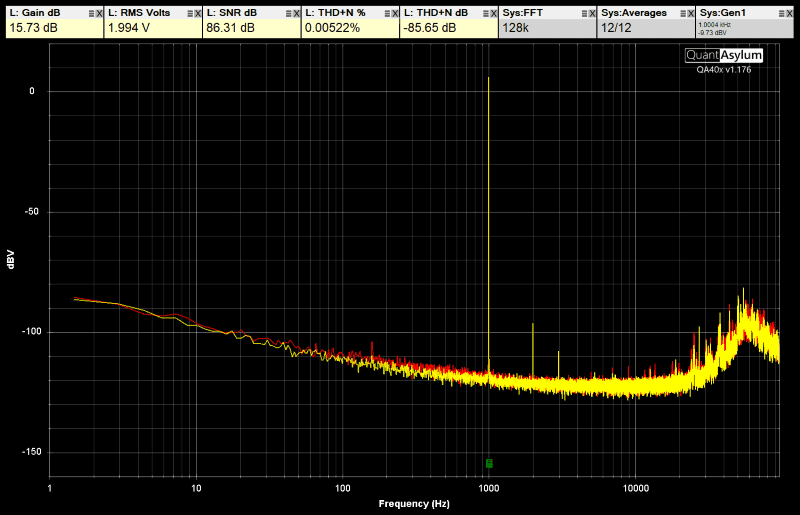
As you can see, the amp performs exceptionally well, adding only 0.00679% distortion. This value means that the sum of the multiples of the fundamental frequency combine to a level 83.36 dB below the reference signal. For reference, this is very good performance and exceptional for a Class D amplifier.
Now, let’s look at the distortion characteristics of the amp differently. Our test equipment can generate a plot that shows the THD+N at different frequencies. We’ll run this amp at the same 2-volt output level and have the QA403 software measure THD+N nine times per octave.
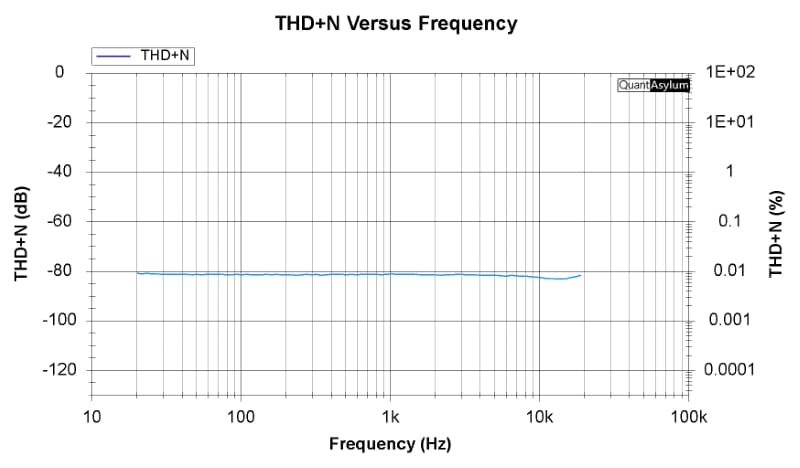
Now, as it happens, this is a well-engineered amplifier. Besides a minor dip between 10 and 20 kHz (which means less distortion), this amp is extremely consistent across the entire audio spectrum. Not all amplifiers can do this. If we saw an increase in THD+N within a specific frequency range, we’d report that highest level as the THD+N spec for the amp.
Distortion Versus Power Measurement
Until now, we haven’t consistently delved into the harmonic distortion versus output level discussion in our Test Drive Reviews. However, it’s an important topic, especially if you’ll be using the amplifier to drive midrange speakers or tweeters. These applications require very little power, so good distortion performance at low levels is essential.
The graph below shows the THD+N measurement for a single channel of this Class D amplifier. Once again, its performance is very good, besting many Class AB amplifiers I’ve reviewed.
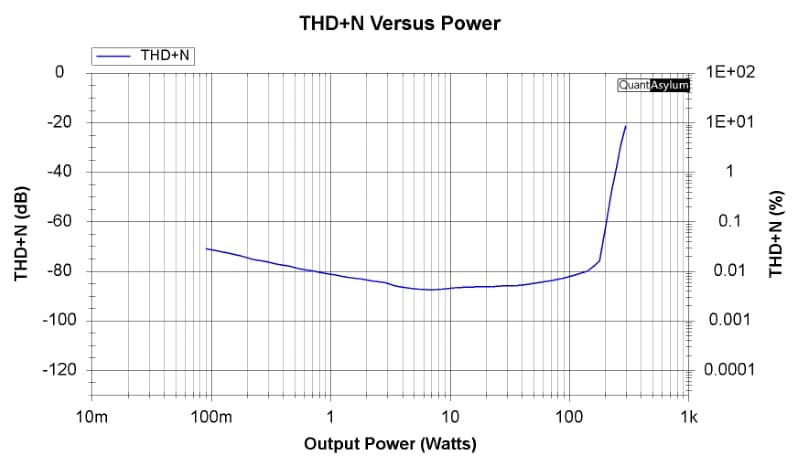
It’s quite normal for a THD+N measurement to be higher at lower power levels. This is because the noise floor contributes to the measurement more than the harmonics in this range. At least, this is the case in a good-quality amplifier like this one. What’s interesting to note is that the amp measures better from about 5 watts up to approximately 100 watts than it does at 1 watt. If we published the “best” THD+N spec, the number would be in the 0.005% range rather than about 0.007%. It’s semantics, as both are very good. However, it shows that even small changes in output power level can produce different results. Think back to our statements about standards. See how important they are?
Noise or No Noise – That Is the Question!
As with any measurement, there are always ways to manipulate the data to produce higher numbers in hopes of a better marketing presentation. As per the CTA-2006-D standard, distortion specifications are to include noise. We re-ran the distortion versus output measurement sweep again but configured the software to measure THD rather than THD+N. The results are in the graph below.
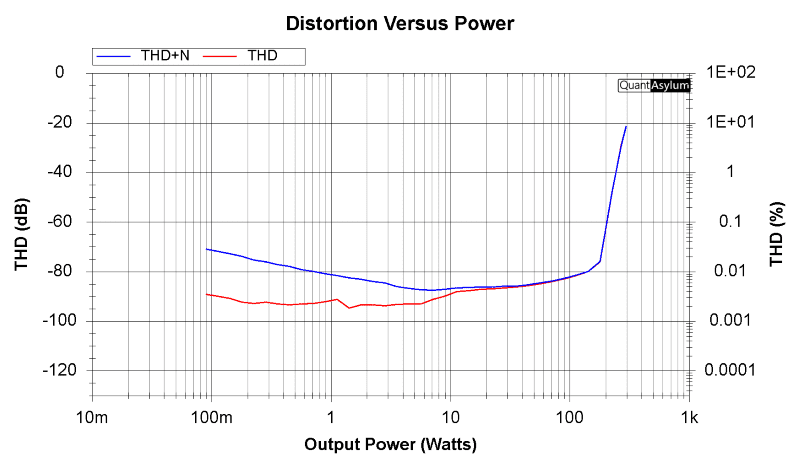
See how easy it is to manipulate data? If we published a THD specification at 1 watt, the number would be down around 0.003%, rather than the THD+N spec of about 0.007%. If you see a brand publishing THD rather than THD+N numbers, they’re likely hiding something or, at the very least, being somewhat misleading. Based on our experience, it’s also possible they don’t know the difference.
Yay for Numbers!
After you’ve spent a significant amount of time listening to different amplifiers (under very controlled conditions) and comparing what you’ve heard with different measurements, you start to get a feel for what’s good, mediocre and downright bad. There are gray areas, of course. We’ve recently had an experience where an amp that measured slightly worse sounded better than one that measured better. We’re only talking about a few hundredths of a percent. Nevertheless, we’re working on experiments to quantify that. For now, our Test Drive Reviews will see changes to the data we present in hopes of better conveying the product’s performance under varying conditions. Following those measurement standards enables us to ensure that the data we present aligns with those brands that have a goal of delivering accurate information.
